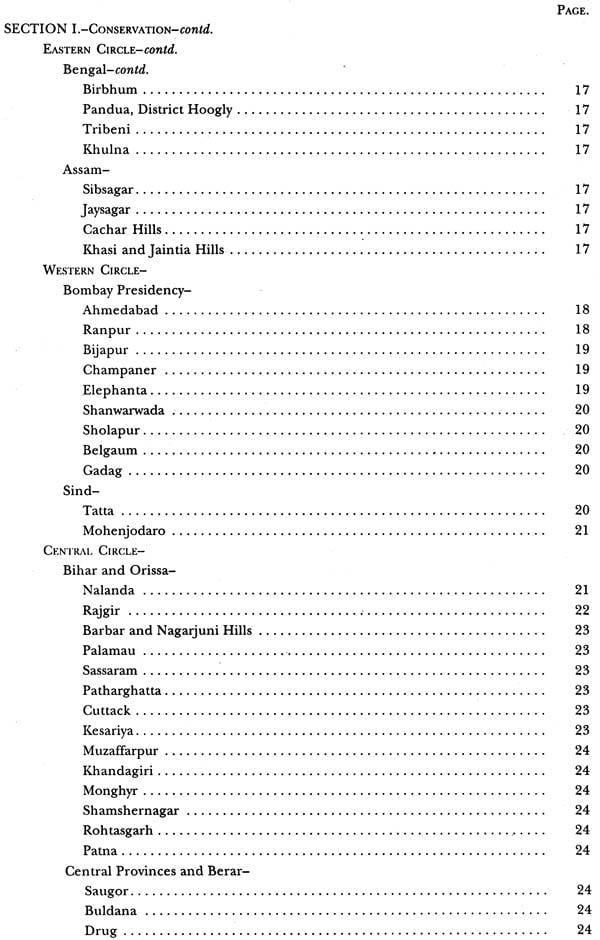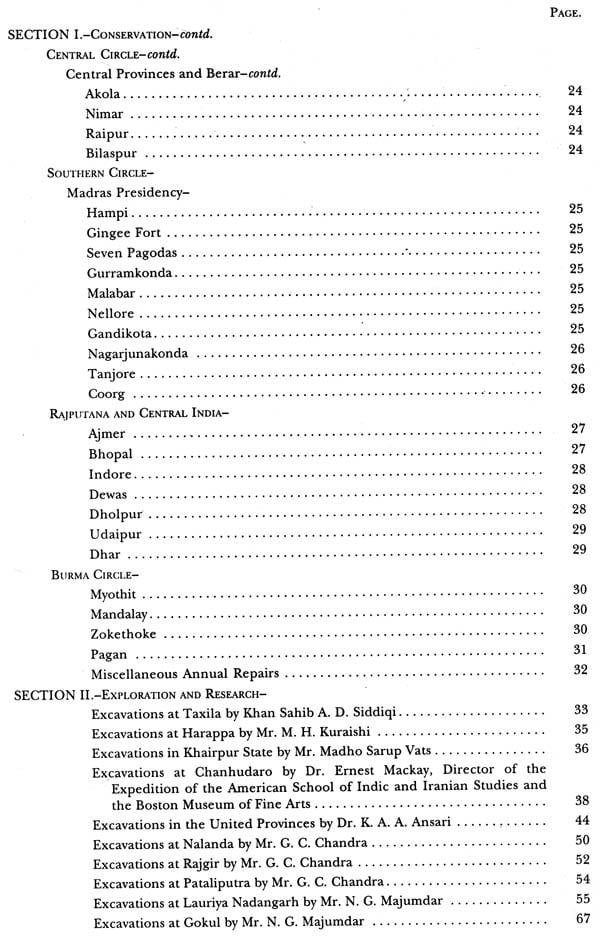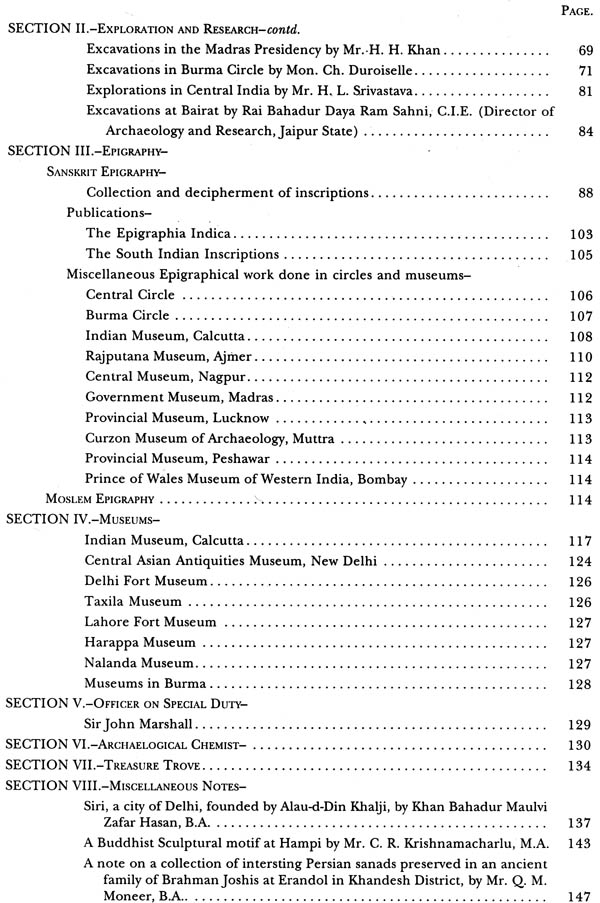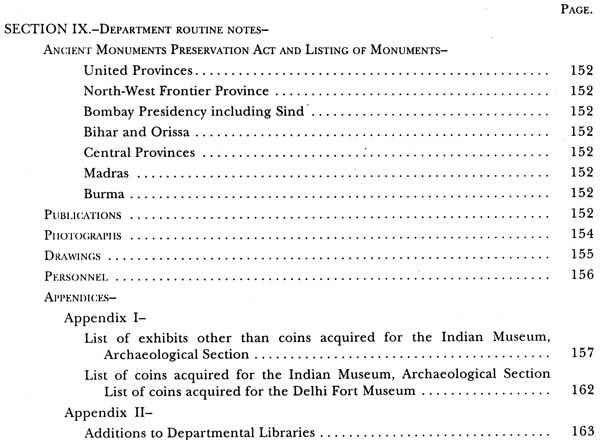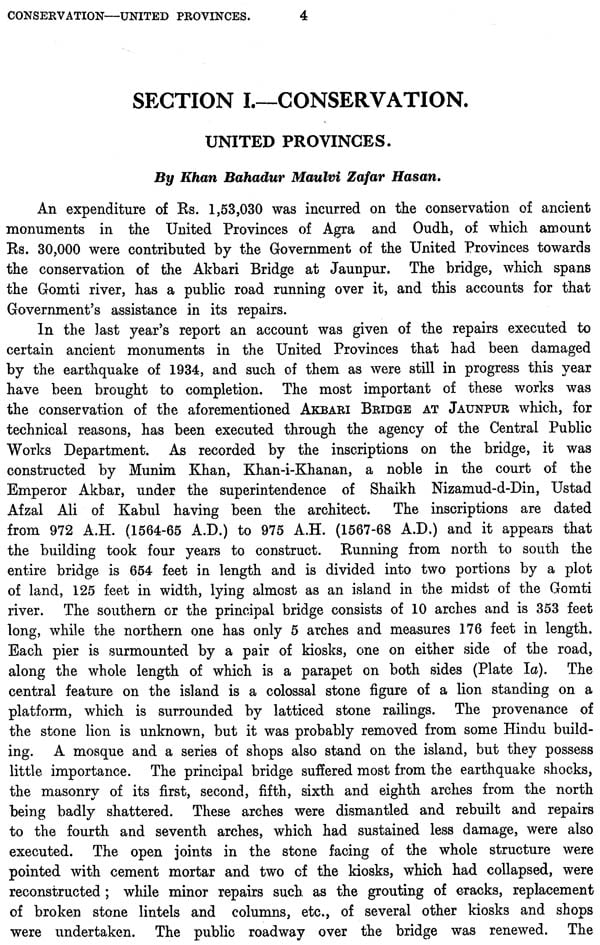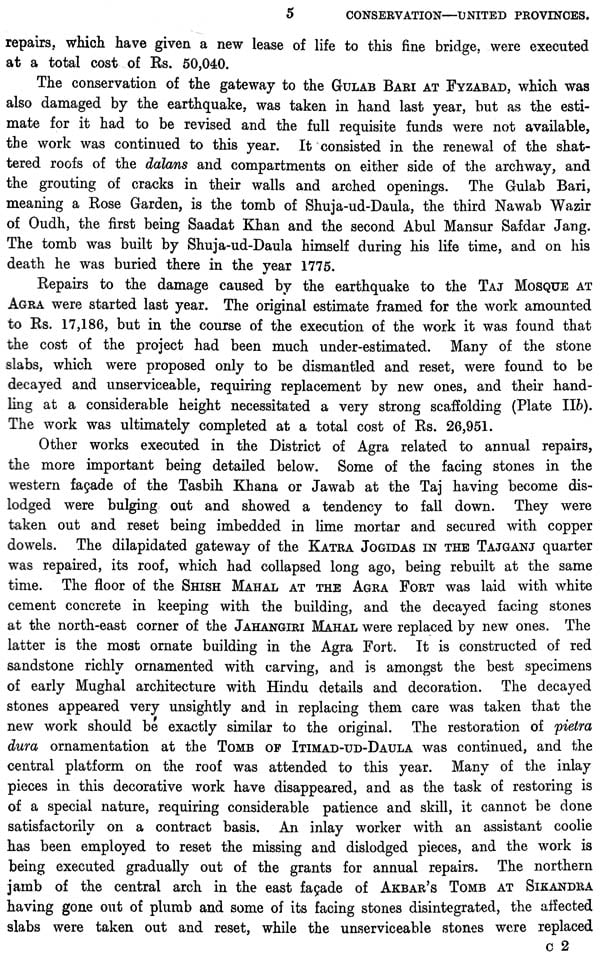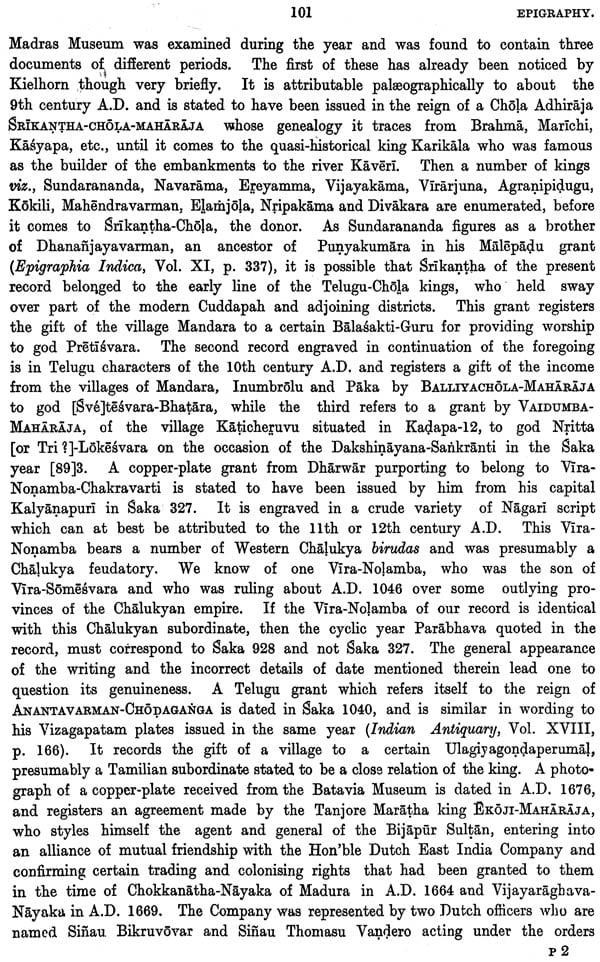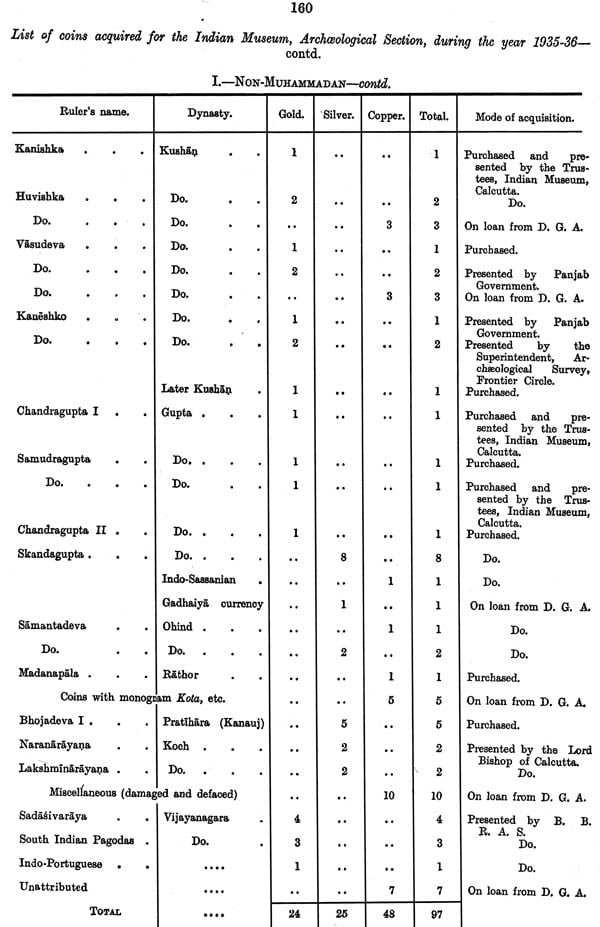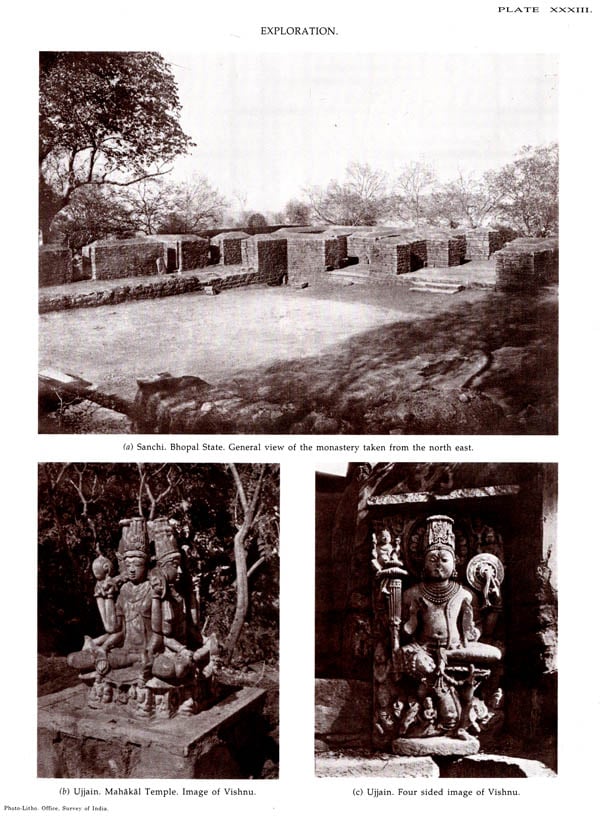
Annual Report of Archaeological Survey of India (1935-36)
Book Specification
| Item Code: | NAW446 |
| Author: | J. F. Blakiston |
| Publisher: | ARCHAEOLOGICAL SURVEY OF INDIA |
| Language: | English |
| Edition: | 2002 |
| Pages: | 218 (40 b/w Illustrations) |
| Cover: | HARDCOVER |
| Other Details | 11.00 X 9.00 inch |
| Weight | 1.31 kg |
Book Description
The financial position in the year under review was unchanged and leit much to be desired. Before the undersigned took over charge of the Archeological Department the budget had been submitted to Government and was to all intents and purposes similar to that for the previous year. It was, there- fore, impossible with the funds at our disposal to undertake any large works either in the field of exploration or in that of the conservation of monuments. The Bihar earthquake of 1934, having badly shaken a considerable number of our monuments in that and other adjoining Provinces as reported last year, the Government of India made a special grant of Rs. 28,100 and the Government of the United Provinces Rs. 30,000 to complete the special repairs to the Akbari Bridge at Jaunpore that were commenced in the previous year. It may be mentioned here that the Government of India realising that the funds of the Department have been most seriously depleted, have sanctioned a special prant of Rs. 2 lakhs for Conservation for the succeeding year.
Perhaps the chief event of the year in Indian Archeology has been the advent of the first foreign exploration expedition to India, namely, the American School of Iranian and Indic Studies headed by Dr. I. J. H. Mackay (at one time a special Exploration Officer in the Indian Archeological Department) as foreshadowed in last year’s report. This Society, which conducted excavation operations at Chanhudaro in the Nawabshah District of Sind, has had a most successful season. Of the finds made by the Expedition, India retained all unique specimens and very full share of other antiquities and the residue, which Dr. Mackay was able to send over to America, has been much appreciated there, and it is hoped that other Societies trom America and other lands will be attracted to the fertile field that awaits them in Yodian Archeology.
The prospect of more non-official activity, both Indian and foreign, in the excavation field in the near future has brought into relief the inadequacy of the Department’s cadre. Endeavours have been made to revive the post of a Special Officer for Exploration, as it is felt that if several private Societies take up excavations at different sites in various parts of the country, it will be beyond the capacity of the Director General and his Circle officers to supervise their work as they have their own multifarious duties to attend to. It is also intended that the Special Officer shall train Indian scholars in the principles of excavation in order to fit them to conduct excavations on behalf of Indian States and non-official Societies. It is regretted, however, that the Government of India has not yet been able to accede to this request.
An interesting ceremony took place at Sarnath in November 1935 when the Director General of Archeology in India on behalf of His Excellency the Viceroy of India presented to the Mahabodhi Society for enshrinement in the Mulagandhakuti Vihara at Sarnath certain Buddhist relics, which had been found by the late Mr. Henry Cousens of the Archeological Survey of India in 1910 at Mirpur Khas in Sind. These relics had remained since the year of their discovery in the Prince of Wales Museum at Bombay.
The Director General was able for the first time after many years to visit Burma (the last occasion being in 1924 when an officer from the Head Ofiice, the writer, then Deputy Director General of Archeology was deputed to pay a visit to that country) and to inspect, so far as time permitted, various conservation works that had been executed or were in progress. Burma will be separated from India in April 1937 and as a result, the Archeology of that country will be directed locally, the Archeological Survey of India hemg no longer officially concerned with it. Owing to the serious illness of the permanent Archeological Superintendent of Burma Circle, which coincided with the Director General of Archeology’s visit, the services of Mon. Chas. Duroiselle, who had retired some years previously, were re-engaged at short notice, as there was no suitable officer to take charge. It has also been arranged that this officer shall train a young Burman to succeed him after a suitable period of probation.
In this Report will be found a list of those publications issued during the year and of those sent to the Press, which, it is believed, presents a fairly formidable record of literary work executed by our officers during the year. Among persons not employed by the Department I wish to refer to the very useful work being done by Mr. S. Paramasivan, the Archeological Chemist attached to the Government Museum at Madras, who is taking great interest in the question of the preservation of frescoes in the South Indian temples and has submitted a very well-considered report on the complicated question of the frescoes in the Brihadisvara temple at Tanjore.
Sanction has been given by the Government of India to a scheme of distribution to the principal Museums of India of surplus antiquities now housed at the small local Museum at Mohenjodaro. It is proposed to retain a fully representative collection at the site, but in order to provide more space for future acquisitions at Mohenjodaro and to afford facilities to students in different parts of India to study and compare the finds discovered in Sind, this scheme has been evolved and hundreds of spare antiquities will be disposed of in this manner. To facilitate the distribution work, a special officer was employed to split up the surplus collection into representative and equal sets. It is hoped at a later date to take similar action in respect of spare or surplus antiquities in the local Museums maintained by the Department at Harappa, Sarnath and other sites.
The undersigned is much indebted to Rao Bahadur K. N. Dikshit, Deputy Director General of Archeology in India, for recasting portions of the ‘ Ex-ploration’ and Museum Sections and to him and Mr. H. L. Srivastava, Assistant Superintendent, Archeological Survey of India, for the willing assistance they have given him in editing both this and the previous year’s report.
**Contents and Sample Pages**

